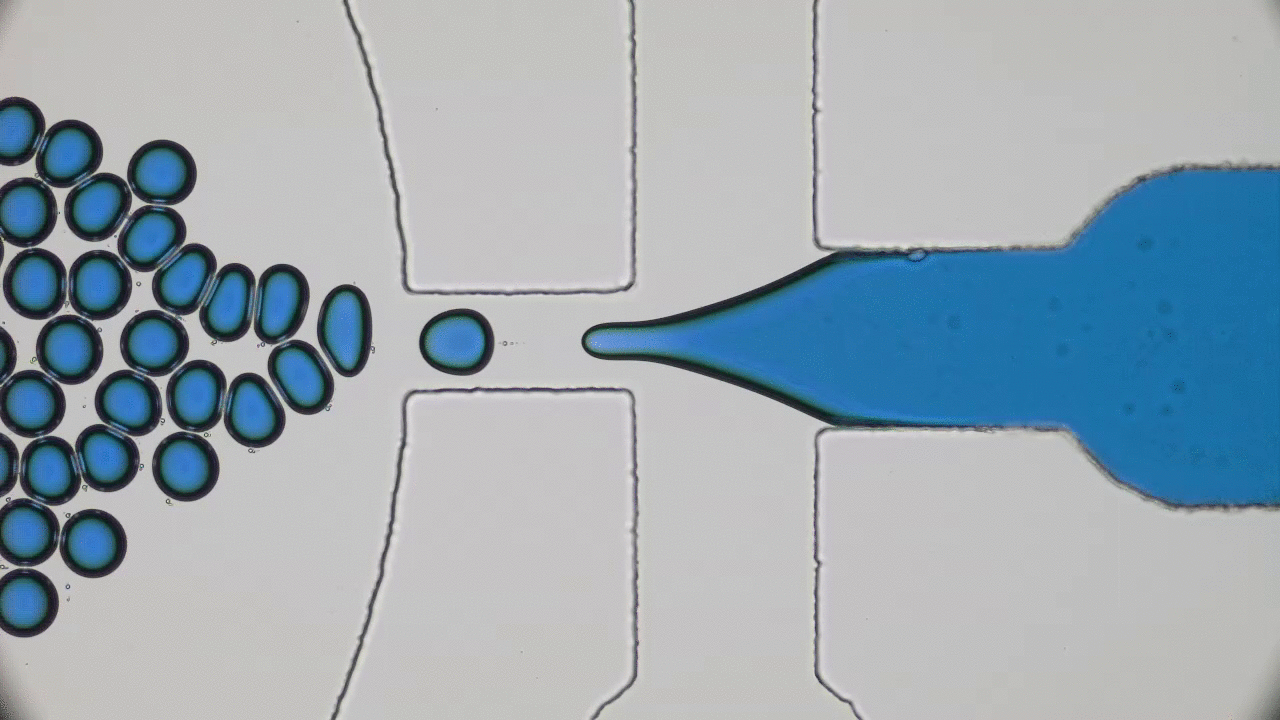ThisThough they may not realise it, anyone who’s taken the subway at rush hour knows how a red blood cell feels passing through the human spleen. Almost home now, just need to get through the gates; but wait, someone’s ticket isn’t working, the crowd is starting to push, the gates are getting jammed… Maybe you should have called a cab.
Bioinspired e-skins: camouflaging with the flip of a switch
Human skin has many functions beyond ensuring that all of our insides stay, well, inside. Skin also acts as a giant sensor that feels sensations like pressure, temperature, or vibration, and converts them into electrical signals to be processed by the brain. In the animal kingdom, some species like chameleons can even use their skin to selectively blend into their environments. Scientists have set out to create electronic skins, or e-skins, that can mimic or even outperform the typical functions of the human skin by taking on color changing abilities like chameleon skin.
Trichoplax adhaerens: tropical sea-dweller, microscopic contortionist, and biomechanical marvel
Meet Trichoplax adhaerens, a microscopic marine animal from one of the oldest known branches of the evolutionary tree. It looks like a microscopic cell sandwich: two layers of epithelial cells (which make up the surfaces of our organs), with a layer of fibre cells in between.
Don’t French kiss the frog prince : how to make better adhesives by mimicking the frog tongue and saliva
What do a frog’s tongue and a piece of Scotch tape have in common? Not much at first glance. However, if you press your finger on either one of them, you will certainly feel a sensation of stickiness. Indeed, frog saliva acts like a super glue which quickly trap insects. Researchers from Georgia Tech described the saliva biomechanics and highlight some important properties which could be used for high performance adhesive applications
Totally tubular: Polymer plumbing for tissue engineering
Our bodies rely on many types of tube-shaped organs to transport blood, air, water, food, urine, and feces. These tubular organs are stimuli-responsive: they can constrict or dilate, secrete chemicals, or act as a selective barrier in response to biological signals. Developing synthetic versions of natural tissue structures that mimic biological responses is at the cutting edge of tissue engineering, synthetic organ development, and even soft robotics design. But what materials can be used to grow responsive tubes in the lab?
Real soft bites made by a model tongue to better assess food texture
The texture of food products can be tailored so you feel them as soft or hard in your mouth. The measure of food texture is achieved by using tools like a compression machine with two metallic plates to mimic the compression between your tongue and palate. However, the results from these measurements can disagree with the texture we actually perceive because the bottom metallic plate of the machine does not reproduce the deformability of our tongue. This missclassification is especially dangerous for people with swallowing problems who can only eat soft foods. A team of Japanese researchers developed a test machine with a silicone rubber artificial tongue on the bottom metallic plate to better assess food texture.
“I don’t think there will be a return journey, Mr. Frodo”: how thermodynamic irreversibility makes life flourish
Understanding the origin of life is one of the most enduring and fundamental scientific challenges there is. Of all branches of science, physics is probably not the first place one would think to go to for enlightenment. Life seems too complicated and multi-layered to be captured by the simplistic frameworks of physics. Today’s paper tackles a small part of understanding the origin of life – the physics of self-replication.
Plants detect gravity by going with the (granular) flow
Plants need to know the direction of gravitational pull in order to grow their roots downward and their stems upward. This information is crucial whether the plant grows in your garden, on a cliffside, or even on the International Space Station [1]. While it’s been said that it took a falling apple for Newton to figure out how gravity works, our photosynthetic friends use a more intricate microscale sensor to detect gravity. This sensor consists of starchy granules called statoliths which can be found on the bottom of specialized cells called statocytes.
Squid reveal the secret to a “perfect” lens
How do squid build a self-assembling “perfect” lens? Research reveals that diffusion and cell biology are the key.
No pain, no gain : double network hydrogels get stronger after mechanical loading
Pulling too hard on a synthetic soft material like a rubber band usually leads to its failure. However, some biological soft materials, like our muscles, experience the opposite behavior. Our muscles, for instance, grow by repairing damage caused by a mechanical effort, such as lifting weigths. A team of researchers from Hokkaido University successfully mimicked this biological process and applied it to develop hydrogels that get stronger under tensile stress.











